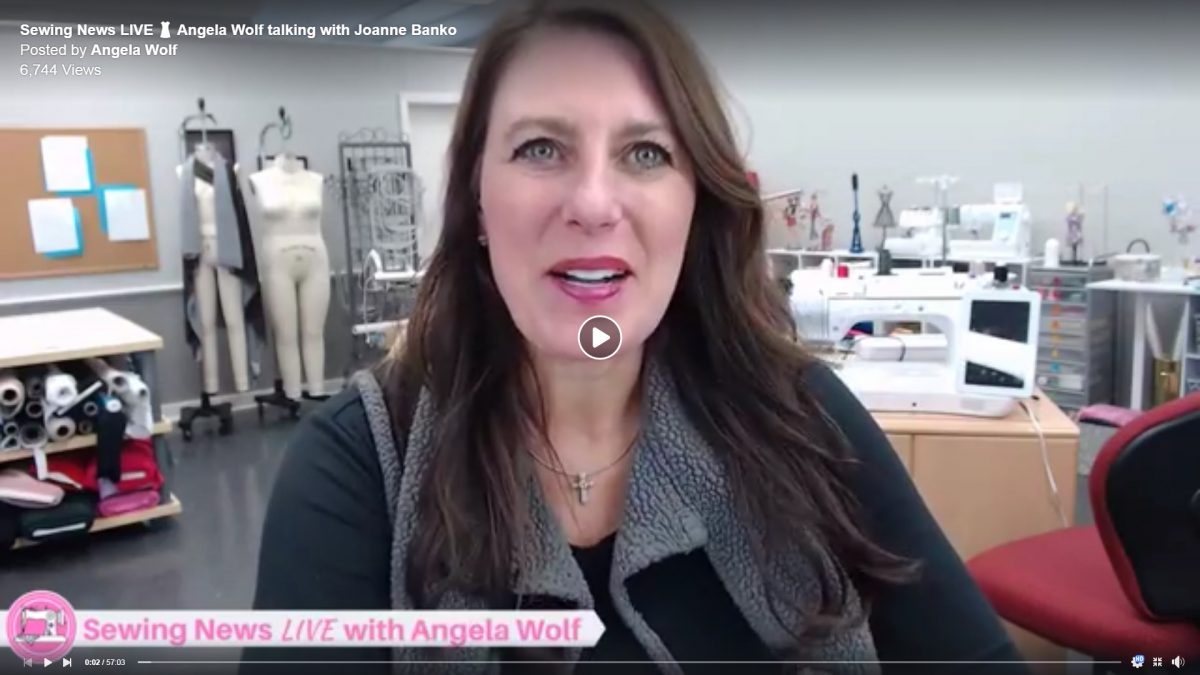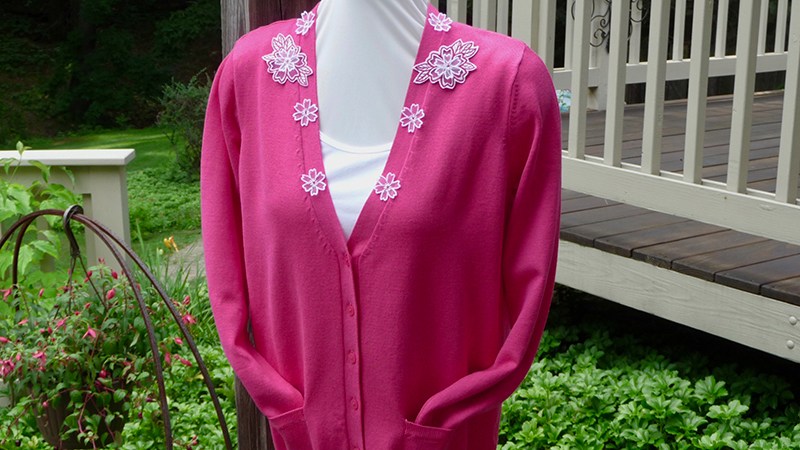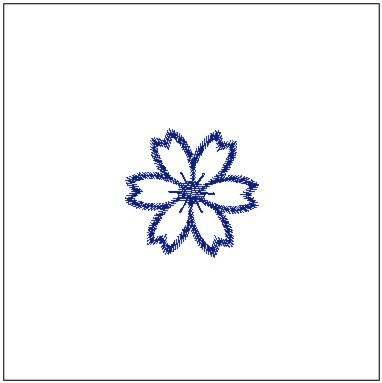Sewing News LIVE 


https://www.facebook.com/AngelaWolfCouture/videos/vb.146889375341519/212312786327513/?type=2&theater

Sewing News LIVE 


https://www.facebook.com/AngelaWolfCouture/videos/vb.146889375341519/212312786327513/?type=2&theater

Getting dressed for summer often means sundresses and sleeveless garments like tank tops and camisoles. These are all quite comfortable in a warm setting but what happens when you enter the zone of chilly air conditioning? If you’re anything like me, you reach for a sweater! This sweater is designed to complement both casual and dressier garments. It’s trimmed with designs created as free-standing flowers easily tacked to the sweater with machine stitches. I chose this color scheme to wear with white, but you can shop for a sweater in any color you like and compliment it with contrasting or matching flowers to suit your own style. Freestanding flowers like these are a great way to make a plain sweater look extra pretty! Are you ready? Let’s go sew!
Materials and Supplies
Materials for Flowers
Note: An 8-inch square of fabric is ample size for stitching in the 4-inch X 4-inch hoop.
Featured Designs

Note: These two floral designs are delicate, making them ideal for lightweight accents on the sweater. Feel free to try similar floral designs if you have them in your repertoire. If you do choose alternative designs, be sure to test first to make sure they are suitable.
Note: Important information to read before you begin this project: Please take a look at the instructions for our Sandals with Machine Embroidery project featured for the month of July. You will follow the exact same process for stitching the little flowers for this project. Both floral designs used for this sweater will fit a 4-inch hoop. Supplies listed here allow you to create two large flowers from the knitted fabric, and six small flowers on netting, all in the 4-inch hoop. You will need two small flowers to layer with each large flower. I made lots of extra small flowers and played with different positions on the sweater before coming up with the final design layout. Cut as many pieces of fabric and netting as you need to decorate your sweater. White fabric and netting is featured in this example. I chose the embroidery thread color for the large flowers to match the sweater and then used white for all of the small flowers. Be sure top and bobbin thread match for all the flowers you create.
Next, trim excess knit, leaving a small margin around each flower. See Figure #4.
As a final step, carefully trim the knit away from the inside of each flower petal as follows: Pinch the knit with your fingertips to pull it away from the netting, snip the knit only, and then continue to carefully cut away knit to expose netting underneath. See all completed flowers in Figure #5.
You are finished! Enjoy wearing your pretty new sweater this summer!
See photos of sweater before and after below:
Options and Ideas

All of these materials can be found at your local craft or hobby store.
Step 1: Download the #bearbat patter and print out 2 copies. One for directions, the other for cutting patterns.
Step 2: Cut your patterns out, then place and pin to your material.
Step 3: Cut your patterns out leaving 1/4″ seam allowance. We suggest using Karen Kay Buckley’s Perfect Scissors to help with tight curves and turns.
Step 4: Mock your pieces up, cleaning cut edges as needed. At this point, you may want to change up material in different areas depending on the type of look you are going after.
Also, you can replace the heart shape on the belly with whatever shape and design you would like. I decided to create a button pocket in the middle of the heart.
Step 5: Fully assemble your front and back piece.
WINGS & Ears: Top stitch the inner ear pattern to the face of your front ear piece. Then with the inner ear piece facing the back piece, sew your ears together keeping your 1/4″ sew line in mind and keeping the bases open. Turn your ear pieces inside out then fill with Polyfil. Repeat the same step with your wing pieces.
BACK: Next, place the back wrong side up and pin the ears and wings onto the back piece keeping your 1/4″ sew line in mind.
FRONT: Place the front body piece facing up. Place pin your eyes, snout, nose mouth and belly shape in place then sew then onto the front piece keeping your 1/4″ sew line in mind.
Step 6: After your back and front pieces are fully assembled and sewn on, with the backside facing up on the bottom piece, place your front piece faced down on top of your back piece and sew a 1/4″ line around the border. MAKE SURE YOU DO NOT SEW THE BOTTOM EDGE.
Pulling your plush inside out from the bottom, your ears and wings should pop out, and the bottom should be open, leaving an accessible area to fill with Polyfil.
Step 7:Fill the head and body from the bottom using Polyfil and sew the body shut. You are now finished with your #bearbat.